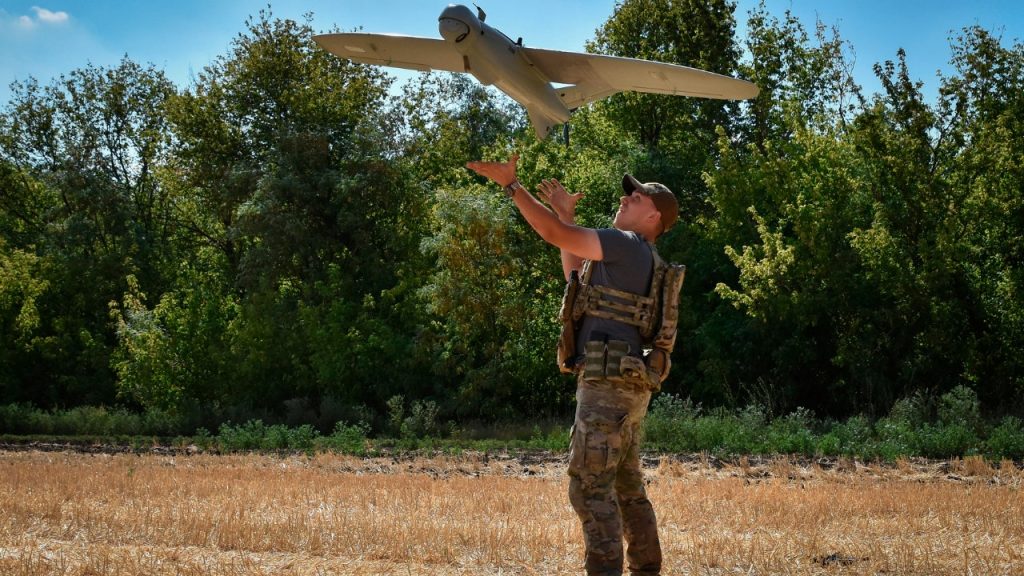Ukraine’s Independence Day Marked by Cross-Border Strikes and Defiant Resilience
In a stark illustration of the ongoing conflict between Russia and Ukraine, Russian officials reported that Ukrainian drones targeted a nuclear plant in Russia’s Kursk region on the night of Ukraine’s 34th Independence Day. The symbolic timing of the attack—coinciding with celebrations marking Ukraine’s break from Soviet control in 1991—underscores the deep historical tensions that continue to shape the current conflict. According to Russian authorities, the strikes damaged a transformer at the nuclear facility, though they quickly assured that the fire was extinguished and radiation levels remained normal. The United Nations nuclear watchdog acknowledged awareness of reports about “military activity” affecting the plant but noted it had not independently verified these claims. Director General Rafael Mariano Grossi reiterated the organization’s position that “every nuclear facility must be protected at all times,” highlighting the dangerous escalation that attacks near nuclear infrastructure represent in this increasingly complex war.
The strikes extended beyond the nuclear facility, with Russian officials reporting that Ukrainian drones also ignited a fire at the port of Ust-Luga in the Leningrad region, home to a major fuel export terminal. The regional governor claimed that approximately ten Ukrainian drones were shot down in the area, with falling debris allegedly responsible for starting the blaze. These incidents occurred amid what Russia’s Defense Ministry described as a larger drone offensive, claiming its air defenses intercepted 95 Ukrainian drones over Russian territory on Sunday alone. The scale of these operations reflects Ukraine’s continued ability to project force deep into Russian territory despite facing significant challenges on its own soil, where Ukraine’s air force reported intercepting 48 of 72 Russian drones and decoys launched in overnight attacks.
As these cross-border strikes unfolded, President Volodymyr Zelenskyy addressed his nation from Kyiv’s Independence Square, presenting a vision of Ukraine’s future defined by self-determination rather than external forces. “We are building a Ukraine that will have enough strength and power to live in security and peace,” he declared, emphasizing the country’s pursuit of a “just peace” while asserting that “what our future will be is up to us alone.” His words carried particular weight following the recent U.S.-Russia summit in Alaska, which had sparked concerns among many Ukrainians that their interests might be sidelined in negotiations between global powers. Zelenskyy sought to counter these anxieties by portraying Ukraine as a respected equal on the world stage, suggesting that international recognition of Ukraine’s sovereignty remains strong despite diplomatic maneuvers occurring without direct Ukrainian participation.
The targeting of Russian energy infrastructure, particularly nuclear facilities and fuel export terminals, represents a strategic approach by Ukrainian forces aimed at applying pressure on Russia’s economy and energy sector. Such tactics mirror Russia’s own campaign of targeting Ukrainian power plants and critical infrastructure, which has caused widespread hardship for Ukrainian civilians over multiple winters. The symmetry of these approaches highlights how energy security has become a battlefield in itself, with both sides attempting to undermine the other’s capacity to sustain both military operations and civilian life. However, attacks near nuclear facilities carry particular risks that extend beyond immediate military considerations, potentially threatening regional environmental security and raising alarm among international monitoring organizations concerned with preventing nuclear incidents in an already volatile conflict zone.
As the war enters another season with no resolution in sight, the Independence Day celebrations in Ukraine carried a mixture of defiance and somber reflection. The holiday commemorating liberation from Moscow’s control three decades ago now takes place against the backdrop of a nation fighting for its very existence against the same historical power. For ordinary Ukrainians, the day represents not just historical pride but contemporary resistance—a testament to their determination to preserve the independence declared in 1991 against current threats to sovereignty. The continued ability of Ukrainian forces to strike targets deep within Russia serves as both a military tactic and a powerful psychological message to both domestic and international audiences that, despite territorial losses and humanitarian suffering, Ukraine remains capable of imposing costs on its larger adversary.
The exchange of drone attacks across borders reflects the evolution of this conflict into what military analysts increasingly describe as a war of attrition, where neither side appears capable of decisive victory in the near term. Russia continues to press its advantage in conventional military resources and manpower, while Ukraine leverages precision strikes, international support, and national unity to resist. The targeting of energy infrastructure on both sides suggests a recognition that the conflict may extend through another winter, with both militaries attempting to undermine the other’s capacity to sustain operations in harsh conditions. As President Zelenskyy referenced the world’s respect for Ukraine as “an equal,” his words highlighted a central Ukrainian narrative: that despite asymmetries in size and military power, Ukraine’s resistance has earned it recognition as a sovereign nation determining its own destiny—the very principle at the heart of the Independence Day being commemorated amid air raid sirens and distant explosions.


